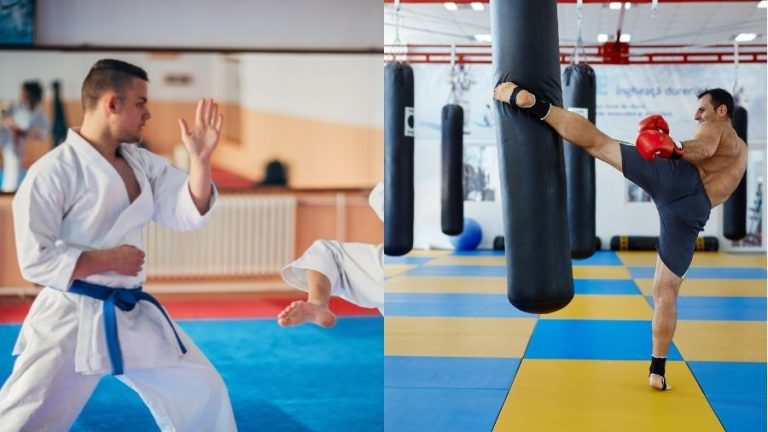Is Kickboxing Good for Self-Defense?
1. Introduction
In recent years, the importance of self-defense has become increasingly apparent, leading many individuals to seek effective methods to protect themselves and their loved ones. While numerous martial arts and combat sports offer self-defense techniques, kickboxing stands out as a highly practical and efficient option.
2. The Fundamentals of Kickboxing
Kickboxing originated from a combination of various martial arts, including Muay Thai, boxing, and karate. It emphasizes striking techniques using punches, kicks, knee strikes, and elbow strikes. By mastering these techniques, individuals can develop a solid foundation for self-defense.
3. Enhancing Striking Techniques
3.1 Punching
Punching is a fundamental aspect of kickboxing and plays a crucial role in self-defense situations. By learning proper punching techniques, individuals can generate significant power and accuracy, enabling them to effectively ward off attackers and create opportunities for escape.
3.2 Kicking
Kicking techniques in kickboxing involve a wide range of strikes, such as roundhouse kicks, front kicks, side kicks, and high kicks. These techniques provide versatility and enable practitioners to maintain distance, create openings, and incapacitate opponents.
3.3 Knee Strikes
Knee strikes are powerful close-quarters techniques that allow individuals to deliver devastating blows to an assailant. Learning how to utilize knee strikes effectively can be a valuable asset in self-defense scenarios, providing an advantage in clinching or close-range encounters.
4. Defensive Maneuvers
In addition to offensive techniques, kickboxing also emphasizes defensive maneuvers to protect oneself from incoming attacks. Here are some key defensive strategies:
4.1 Footwork and Mobility
Footwork and mobility are essential components of kickboxing. By developing agility, practitioners can evade attacks, maintain distance, and create angles for counter-attacks.
4.2 Blocking and Parrying
Proper blocking and parrying techniques enable individuals to deflect or absorb incoming strikes, minimizing the impact and potential harm. By mastering these defensive maneuvers, kickboxers can effectively neutralize threats and regain control of the situation.
4.3 Evasion and Countering
Kickboxing trains individuals to recognize and evade incoming strikes, ensuring they can avoid harm while simultaneously setting up counter-attacks. This combination of defensive and offensive movements enhances their ability to protect themselves effectively.
5. Physical Fitness and Conditioning
Kickboxing offers an intense cardiovascular workout that engages various muscle groups, improves stamina, and enhances overall physical fitness. By regularly practicing kickboxing, individuals can build strength, increase flexibility, and improve their overall conditioning, making them better prepared to handle physical confrontations.
6. Mental Strength and Self-Confidence
Beyond the physical aspects, kickboxing nurtures mental strength and self-confidence. Through rigorous training and overcoming challenges, practitioners develop discipline, perseverance, and the ability to remain calm under pressure. These mental attributes contribute to effective self-defense and can positively impact other areas of life.
7. Practical Application in Self-Defense Situations
Kickboxing techniques are designed to be practical and effective in real-life self-defense scenarios. The training focuses on responding to common attacks and developing the skills necessary to neutralize threats quickly. By simulating realistic situations and practicing appropriate responses, kickboxers gain the confidence and competence to defend themselves effectively.
8. Combining Kickboxing with Other Martial Arts
Many individuals choose to combine kickboxing with other martial arts to enhance their self-defense capabilities further. By integrating different techniques and strategies, practitioners can create a well-rounded skill set that adapts to various situations, providing them with a broader range of options when faced with threats.
9. Safety Considerations and Training Approaches
Safety should always be a priority when practicing kickboxing. It is crucial to train under the supervision of qualified instructors and follow proper techniques to minimize the risk of injury. Additionally, practitioners should be aware of their physical limitations and gradually progress in intensity and complexity as they advance in their training.
10. Conclusion
Kickboxing is a highly effective martial art and combat sport that offers both physical and mental benefits while equipping individuals with practical self-defense skills. Through its focus on striking techniques, defensive maneuvers, physical fitness, and mental strength, kickboxing provides a comprehensive approach to personal protection. By investing time and effort in learning and practicing kickboxing, individuals can enhance their self-confidence, improve their physical fitness, and develop the skills necessary to protect themselves in real-life situations.

Hello! Let me enthusiastically introduce myself as a dedicated blogger fueled by an intense passion for meticulously crafting insightful and well-researched blogs. My mission revolves around providing you, dear readers, with a veritable treasure trove of invaluable information.







